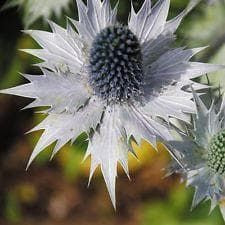Do you ever ponder on the names of plants and seeds? If you watch or listen to gardening programmes then many names may spring to mind. Most popular are roses named after famous people or occasions. Historically one of the most famous was Empress Josephine, an avid and renown collector of roses from around the world at her estate Chateau de Malmaison. Several roses are named for her.
Going back in time we may also be familiar with famous names such as Beth Chatto OBE, an award-winning plantswoman who created world renowned gardens and an extensive plant nursery; Gertrude Jekyll, the British horticulturist and Arts & Craft garden designer or Rosemary Verey, OBE, an English garden designer, lecturer and. garden writer.
But why is Miss Willmott's Ghost haunting our gardens and who was Nora Barlow?
What is the story of Miss Willmott's Ghost? It is said that Ellen Willmott, an enthusiastic horticulturalist, left her unique calling card, scattering seeds of her favourite varieties in gardens she visited. Eryngium giganteum 'Miss Willmott's Ghost' springing up was evidence of her favour.
 Emma Nora Barlow, Lady Barlow, was a British botanist and geneticist. A granddaughter of the British naturalist Charles Darwin, she was among the founders of the Genetical Society in 1919 and enjoyed developing hybrids. Though not developed by her, Aquilegia 'Nora Barlow' , the flower called Nora was named after her.
Emma Nora Barlow, Lady Barlow, was a British botanist and geneticist. A granddaughter of the British naturalist Charles Darwin, she was among the founders of the Genetical Society in 1919 and enjoyed developing hybrids. Though not developed by her, Aquilegia 'Nora Barlow' , the flower called Nora was named after her.
I have cuttings and plants that remind me of friends and relatives. My Mum loved clematis especially 'Nelly Moser', my aunt grow a cascade of perennial sweet peas down a wall and my Dad was a keen allotmenteer, so heritage vegetables and fruit rate highly on my sow and grow list.

